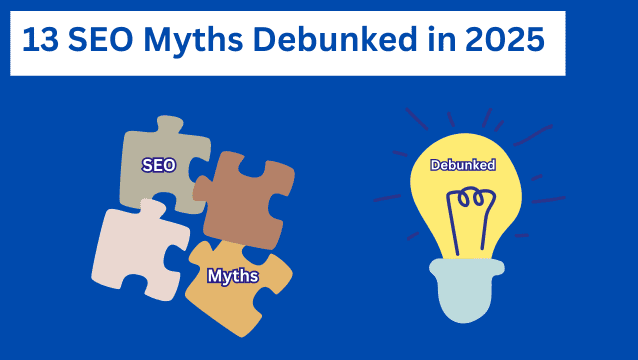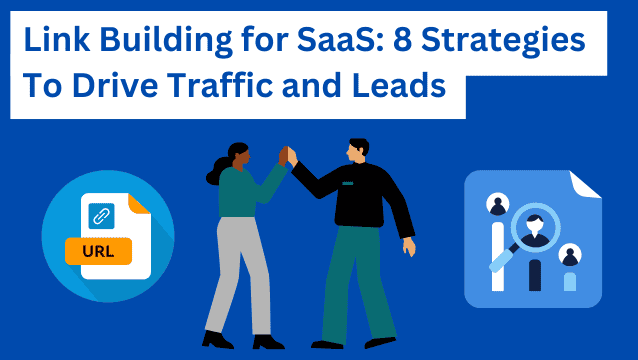What’s the biggest difference in link building in 2025 versus the previous twenty years?
90% of links today are worthless.
While premium, organic link building has always been worth the larger investment, over the last year, the value of mid-range links has crumbled, and now premium links are the only ROI-positive game in town.
As a SaaS-focused SEO agency that specializes in authority link building for companies that NEED results, we’ve watched over the last year as our clients have dominated the SERPs with the premium backlink profiles we built for them. Meanwhile, their competitors have come to us in a panic as traffic built on lower quality links continue to tank.
If your SEO traffic has dropped significantly within the last few years, the problem is probably your past link building strategies.
We highly recommend either booking a call with one of our link building experts or throwing out your old playbook and following the 7 link building strategies in this guide exclusively from this point forward.
These are the ONLY link building strategies we are using today for our clients — clients that come to us because they need tangible lifts to their KPIs and real business outcomes — and we have the track record to prove it.
1. Niche-specific resource page partnerships
Resource pages can give you great backlinks. But most people use them wrong. Smart brands focus on making content others need.
Take Zapier’s API Documentation Guide, for instance.
This comprehensive resource has earned backlinks from various educational technology companies like Edx, Thinkific, and NoCode University.
The guide’s success comes from filling a crucial educational need for traditional and non-traditional learning environments.
Basecamp took a different approach. They published their employee handbook on GitHub, earning backlinks from HR resource pages.
To find good resource pages, try these simple searches:
- “[your industry] + useful resources”
- “[your topic] + recommended reading”
- “inurl: resources + [your keyword]”
Validate potential partners by checking:
- Domain Authority (aim for 50+)
- Traffic trends (use Ahrefs or Semrush)
- Last update date (avoid abandoned pages)
- Current resource quality
- Relevance to your audience
Create partnership-worthy content. A good starting point is filling in gaps in existing resources. Look for:
- Outdated information that needs updates
- Complex topics lacking clear explanations
- Missing practical examples
- Opportunities for original research
Take monday.com’s approach. They created a Project Management Glossary that defines 200+ terms with practical examples. Project management resource pages featured it because it’s more comprehensive than competing glossaries.
2. Combine original research with compelling narratives
Basic reports won’t work anymore. To earn links now, you need two things:
- New research
- A good story
For example, we asked 800+ SEO experts about their work. They shared their strategies and how much they spend. This report, The State of Backlinks for SEO in 2024, delivers their insights.
Our 2024 research reveals key findings about SEO link building:
- Nearly half of marketers spend between $5,000 and $10,000 per month
- Over half believe nofollow links help their site’s authority, challenging common beliefs”
We didn’t just gather statistics. We asked industry leaders like Brian Dean and Andy Crestodina to help us interpret what these numbers mean for your SEO strategy.
The result?
Digital PR is the most effective tactic, used by 16% of marketers, who track their results using Google Search Console.
Working with a small budget? Here’s an idea: Datos teamed up with SparkToro. They looked at their current data about web traffic. Then they shared what they learned about who sends traffic where..
Attract high-quality backlinks by creating reports with unique data that your audience values.
For example, you could study how customers use your products. This gives you special insights that other companies don’t have.
Another option? Ask your subscribers and followers what they think. You’ll get fresh insights straight from your community.
Consider partnering with academic institutions for deeper, research-backed findings for extra credibility.
And if there’s public data relevant to your industry, present it in a new way that makes it easier to understand or more actionable for your readers.
When writing your report, make it as quotable and shareable as possible. Start with a surprising or standout statistic that will grab attention and encourage readers to keep going.
Visual elements like infographics help share key insights on social media. People naturally engage more with images than text alone.
Expert comments from industry leaders make your report more credible. When readers trust your content, they’re more likely to link back to it.
Break your findings into short, tweet-sized pieces. These quick bites of information are easy for readers to share with others.
Once your report is out there, track what’s working to improve future content.
Track two key numbers: how many pitches you send and how many get picked up. This shows if your outreach is working or needs fixing.
Keep an eye on the domain authority of sites linking to your report—higher authority sites mean stronger backlinks.
Watch which parts of your report people share on social media. This shows what your audience cares about most. Also, pay attention to how others use your data – it reveals why they find your report valuable.
3. Strategic guest-blogging
Modern guest blogging requires strategic positioning and unique insights to earn valuable backlinks.
Spray-and-pray guest posting fails because it lacks value and relevance. Both readers and search engines want quality content. That’s why you need fresh insights that match what your audience needs.
Readers and search engines want quality content. Focus on sharing fresh, useful ideas.
Good guest posts do two things: they give blog readers new ideas or useful tips to help solve their problems. This naturally attracts readers and backlinks.
Generic content no longer cuts it—sites want posts that build trust and authority, not just filler.
Take this comprehensive guide I wrote on Superpath’s blog on “How to Use Blogging to Outrank Your Competition” as an example.
It provides a deep analysis of content velocity vs. specificity frameworks, backed by real case studies from companies like monday.com, StudioSuits, and Cruise America.
This post shares new findings about which content to make first and how long it takes to see results. Other sites will want to link to it because it shows real data and strategies not found elsewhere. Let’s explore how you can use guest blogging to grow your site.
1. Audience-specific content mapping: Use tools like SparkToro to uncover
- What the target blog’s audience reads to help your posts resonate with their reading preferences
- Who they follow to ensure you add genuine value by aligning with trusted voices
- The content they typically engage with to increase acceptance chances by matching proven engagement patterns
- Content gaps in the space to help you provide unique value not currently being served
- Influencer tone and style to make your content feel natural and familiar to the audience
2. Competitor gap analysis: Use tools like Semrush or Ahrefs to:
- Identify high-ranking content that has gaps you can fill
- Study underdeveloped content to add more depth and detail that competitors have missed
- Bring fresh perspectives to existing topics to make your content stand out from standard coverage
- Showcase rare data insights to provide unique value that publishers can’t find elsewhere
4. Create strategic content hubs
Think of content hubs like building a city. You don’t just want random buildings – you want neighborhoods that connect and work together.
At uSERP, we build content that naturally flows from one topic to another. Our content marketing hub doesn’t just talk about marketing. It branches into sales tools, customer management, and team productivity.
This natural connection helps us earn links from many different industries.
Going deep matters too. Instead of writing surface-level posts, we create in-depth resources that people use.
Our technical SEO hub is a perfect example. We cover everything from measuring success to choosing the right keywords. When you provide real value, other sites naturally want to link to your work.
What’s on the outside counts too. We make our content easy to read and share by using:
- Clear data charts
- Expert insights
- Real examples
Look at our link building hub. We mix helpful data with expert advice. This isn’t just about looking good – it keeps readers coming back and encourages other sites to link to us.
The final piece? Make sure your content is easy to find and use. Your site should load quickly and look good on any device. Think of it like a welcoming store – people stay longer when they feel comfortable.
By connecting related topics and making them truly helpful, you create content that naturally attracts links. Remember, you’re not just building a bunch of articles – you’re creating a valuable resource that others want to reference.
5. Diversify your link profile
Your link profile requires a strategic blend of sources, not just links from high-DA websites.
Don’t just chase links from big, popular websites. Smaller sites have loyal readers and give you valuable links, even if they aren’t popular.
Google values natural links from both major sites and trusted niche blogs.
A skincare brand would benefit from beauty magazine links for broad reach. It would also gain from organic skincare blogger links for targeted authority.
This mix of links shows Google your content is genuinely useful — especially when niche experts choose to share it.
By diversifying links, the skincare brand creates a natural link profile. This provides more SEO value over time and increases organic reach across diverse audience segments.
To vary your link profile, start by identifying niche sites that align with your product or service, even if their traffic is modest.
Tools like Ahrefs or Sparktoro can help you discover these sites. They can also help you analyze content relevance, audience engagement, and linking patterns.
Connect with genuine, engaged bloggers owning these sites and have a loyal following within your industry. Focus on offering value, like guest posts or collaborations, that will make linking to your site a natural decision for them.
6. Collaboration through content co-creation
Creating content with experts helps you get backlinks naturally.
When experts help create your content, they usually share and link to it. These quality backlinks help your website rank better on Google.
Host interviews with experts in your niche, presenting them as exclusive insights for your audience. Depending on your content style, these interviews can be blog posts, videos, or podcasts.
For example, MarketerHire, an on-demand hiring platform, hosts webinars with marketing leaders. They cover email marketing, scaling paid ads, and hiring fractional talent. The webinars feature experts from leading tech companies.
These webinars create valuable backlink opportunities when industry publications cover the insights shared.
The links acquired also help drive traffic to their homepage and specialized landing pages for specific roles related to the webinar topics.
Working with industry experts or brands on case studies or success stories can help you build links. You can highlight how their tools or insights have contributed to your growth or vice versa.
These co-created case studies are valuable resources that often result in organic links from collaborators’ sites and establish credibility within your industry.
7. Building local authority through strategic partnerships
Getting links from local websites helps you show up in local searches. Start with business directories, then build real connections with other local businesses
Google values these localized links as they reflect real-world community connections.
Start with business directory optimization by listing your business in reputable local directories.
Actively encourage customer reviews and maintain consistent business information across all platforms.
Team up with related local businesses to help each other get links. For example, a gym and a health food store could write articles together about fitness and healthy eating and then link to each other’s websites.
Community engagement rounds out your local SEO link building strategy. Consider:
- Joining and actively participating in local chambers of commerce,
- Getting involved in community events and initiatives, and
- Pursuing local business awards and recognitions, such as “Best of [City Name]” competitions.
These activities generate valuable link opportunities through profiles, event coverage, and awards. They improve your local authority and signal to Google your business’s community relevance.
Why Premium, Organic Link Building Strategies Are The Only Strategies Working Today
Now that we’ve covered the strategies themselves, let me explain why these premium organic link building strategies are the only type that will result in ROI-positive SEO for your business.
I’m not expecting you to take my word for it, but you can’t afford to risk 6 months of SEO budget on an agency promising you cheap results, so let me explain WHY you need to hire uSERP and pay us a lot of money to do your link building, and hopefully, between my logic, the SEO fires you’re trying to put out right now, and uSERP’s industry-leading track record, you’ll do the best thing for your business and give us a call.
1. Google Detects Unnatural Link Building Instantly
Google’s algorithm updates, beginning in 2024, have made algorithmic link penalties more aggressive than ever. The days of manual reviews are gone: AI can now recognize unnatural link-building patterns at scale. Any forced, transactional, or low-value link is automatically ignored or penalized.
2. Premium Organic Links Are Earned, Not Placed
Even though conceptually, it’s possible to pay for placement in much the same way you would build links organically, in practice, the results are wildly different. The type of people and brands who will accept direct payment for link placement ALWAYS do so lazily, obviously, and for lots of people at a time, making it really obvious to Google in a large number of ways.
Premium, organic link building is expensive because it’s NOT done this way. You aren’t paying us to insert links onto websites. You are paying us to be an extension of your business, creating and placing content and organic links. You aren’t paying for the links. You are paying for the time it takes multiple people with multiple skillsets to get those links for your business.
3. Domain Authority and Link Trustworthiness Matter More Than Ever
Google’s Link Trust Score (LTS) heavily favors organic mentions from highly trusted domains. If a link comes from a true authority in your industry, it signals real-world credibility, not just SEO manipulation.
This is directly connected to a benefit of link building and SEO that goes beyond rankings and organic traffic: when your brand gets mentioned on large brands and shows up in search results for relevant topics, you build a TON of trust with your prospects.
They see you as a true authority, because in their eyes, you’ve essentially been vetted by Google and the large brands mentioning you.
4. Engagement Metrics Reinforce Link Value
A premium organic link doesn’t just increase page rank, it drives real traffic, engagement, and conversions. Google now cross-references click-through rates (CTR), time-on-page, and bounce rates from referral traffic to determine if a link is valuable. If users actually engage with your content after clicking a link, Google rewards your site with higher rankings.
If they don’t, it would be worthless to your business outside of an SEO context, and Google now can match that real world context to SEO results.
5. The Death of Traditional Link Building Tactics
Google has rendered 90% of old-school link-building strategies obsolete:
- Guest posts? Devalued UNLESS they’re from top-tier sites.
- Link exchanges? AI detects reciprocal links and ignores them.
- Private Blog Networks (PBNs)? AI detects these easily now.
- Forum and comment backlinks? Zero SEO value, possibly a ranking risk.
- Traditional press releases for link building? Dead for years, and now buried even deeper.
The old playbook doesn’t work any more.
Book A Call With Us If You Need ROI-Positive SEO
We built uSERP from the ground up to specialize in the service nearly every SEO has done poorly over the last few decades: link building.
While most SEO agencies are taking people’s money and building vanity traffic through hacks and cut corners, we’ve been helping our clients hit critical KPIs and growth milestones. Our link building and SaaS expertise took Monday.com from their Series B to a unicorn IPO, and they are just one example of many.
If you need premium links that drive ROI-positive SEO, book a call with our team. We will execute the link building strategies covered in this guide better AND more cost effectively than you could in-house.


